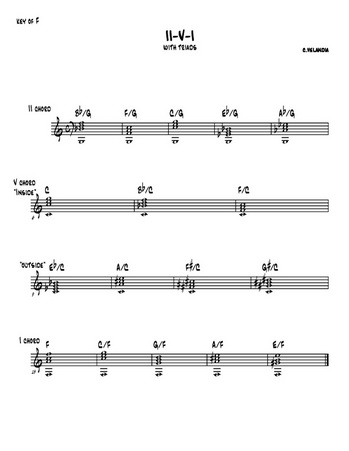
In root position the root is the the lowest note. The inversion is determined by the lowest note of the chord. The augmented triad has a major third on both the bottom and top. The diminished triad has a minor third on both the bottom and top. The minor triad has a minor third on the bottom and a major third on top. The major triad has a major third on the bottom and a minor third on top. The qualities are determined by type and position of the major and minor thirds of the triad when in root position, closed spacing. The root of a triad is the name of the bottom note when the triad is in root position. To fully identify a triad you need to determine three things:

The root, third, and fifth retain their names even when the notes of the triad are rearranged. The third and fifth get their names from the interval size formed with the root. When the triad is in root position, closed spacing, the individual notes of a triad are given the names: root, third, and fifth. When the notes of a triad are written as close together as possible, the triad is said to be in root position, closed spacing. When the notes of a chord are played separately it's called broken style or arpeggio styleĪ chord written or played in a broken style is called an arpeggio. When the notes of a chord are played simultaneously it's called block style or chord style.

For example, the three note chord E-C-G shown below is a triad. As long as the three notes of the chord can be rearranged onto three consecutive lines or spaces, the chord is still called a triad. The individual notes of the triad can appear in any octave and in any order. Triads do not always appear on three consecutive lines or spaces.


 0 kommentar(er)
0 kommentar(er)
